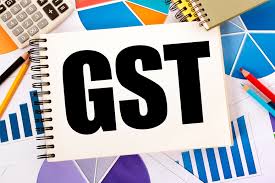April GST kitty goes past ₹1.67 lakh crore
India’s gross Goods and Services Tax (GST) revenues hit a fresh high of ₹1,67,540 crore in April, with revenues from goods imports rising 30% year-on-year and domestic transactions along with services imports rising 17%.
The Finance Ministry said that April’s revenues for transactions undertaken in March, reflect a ‘faster recovery’ of business activity, while industry experts attributed part of the surge to a massive uptick in input costs for producers some of which is also visible in high retail prices, as well as new, tighter input credit norms.
Overall GST revenues were 20% higher than a year ago, and 17.9% higher than March 2022 collections of ₹1,42,095 crore with 7.7 crore e-way bills generated in March, 13% higher than February 2022. “For the first time, gross GST collection has crossed ₹1.5 lakh crore mark,” it said.
‘Multiple favourable factors’
“While the GST collections in respect of March have always been high, the record collections are due to multiple favourable factors, including the recent changes on permitting input tax credits only upon timely compliance by the vendors,” said Deloitte India partner M.S. Mani.
Vivek Jalan, partner at Tax Connect Advisory, said the higher revenues not only reflect the continuing economic recovery, but also the tremendous price rise in input costs and the implementation of GSTR 2B under which a recipient can only take credit for inputs, whose suppliers have filed their returns.
Central GST revenues constituted ₹33,159 crore of April’s gross revenues from the tax, while State GST accounted for ₹41,793 crore and Integrated GST made up ₹81,939 crore, including ₹36,705 crore on import of goods.
GST Compensation Cess collections, used to recompense States, grew 13.08% in April over March collections, to touch ₹10,649 crore. The cess collections included ₹857 crore collected on import of goods, marking a 8.9% decline from the ₹941 crore cess from import of goods in March.
“Even though the spike in April’s GST collections partly benefits from year-end adjustments, the all-time high magnitude of inflows is very enthusing, and augurs well for a robust year-on-year growth in the months ahead as well,” said ICRA chief economist Aditi Nayar, adding there is evidence of a healthy pace of economic activity in March despite the escalating geopolitical conflict in Europe.
Variations in growth trends
There were, however, wide variations in growth trends across States. While Tamil Nadu’s collections grew just 10% in April, Maharashtra saw collections rise by 25%, Odisha 28% Haryana 23% and Andhra Pradesh 22%. Karnataka and Rajasthan recorded a 19% uptick in GST collections, while the growth rate was 17% for Gujarat, and 16% for Telangana, Uttar Pradesh and Delhi.
Six States and Union Territories reported a contraction in revenues from a year ago, including Bihar (-2%), Manipur (-33%), Mizoram (-19%) and Tripura (-3%). GST inflows from Lakshadweep tanked 18% year-on-year, while those in Daman and Diu dropped a sharp 78%.
“The government has settled ₹33,423 crore to the CGST and ₹26,962 crore to the SGST from the IGST. The total revenue of the Centre and the States in April 2022 after regular settlement is ₹66,582 crore for the CGST and ₹68,755 crore for the SGST,” the Ministry said.
“This shows clear improvement in the compliance behaviour, which has been a result of various measures taken by the tax administration to nudge taxpayers to file returns timely, to making compliance easier and smoother and strict enforcement action taken against errant taxpayers identified based on data analytics and artificial intelligence,” the Ministry said in a statement.
Download our App to get knowledge updates: https://play.google.com




Comments
Post a Comment